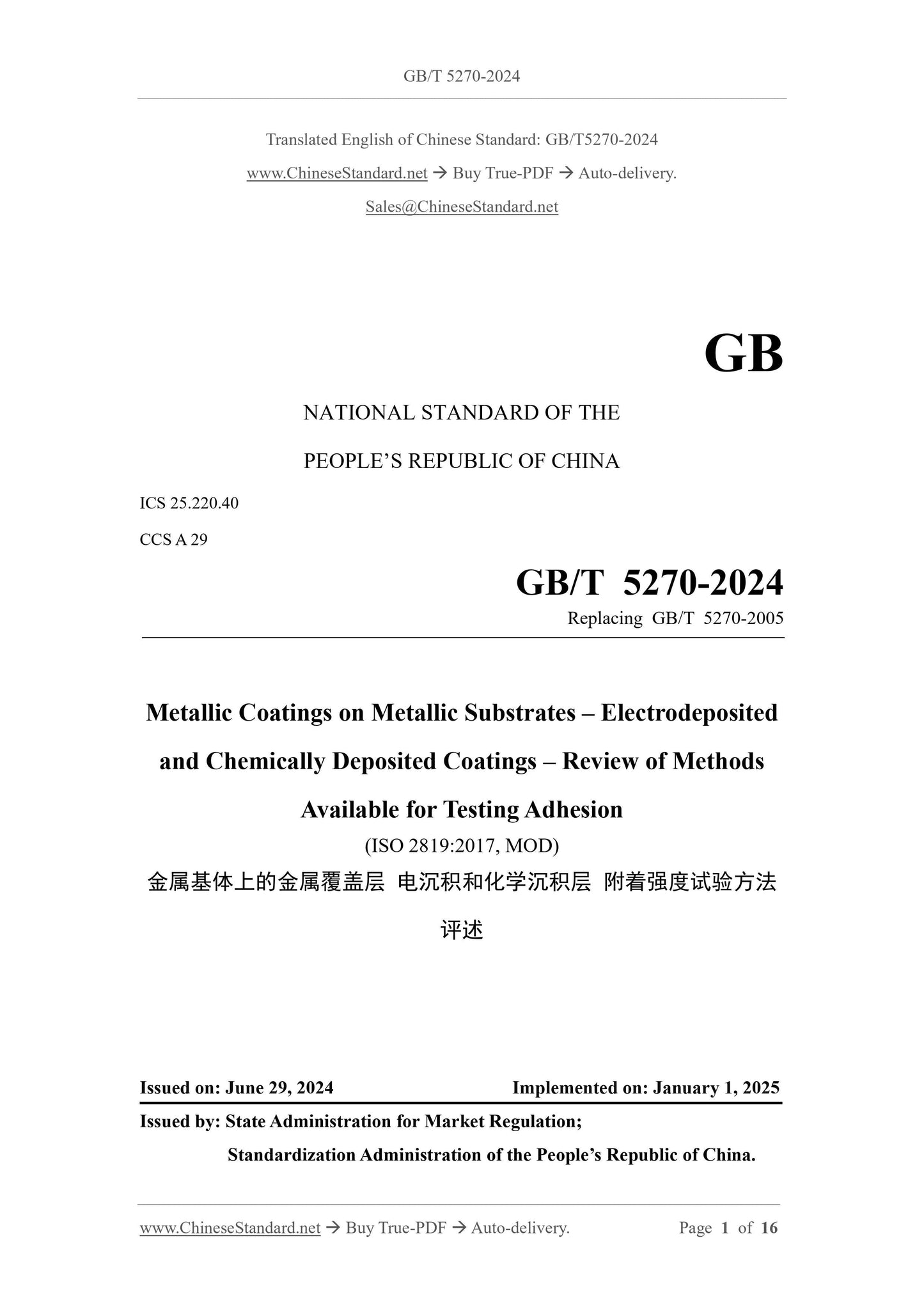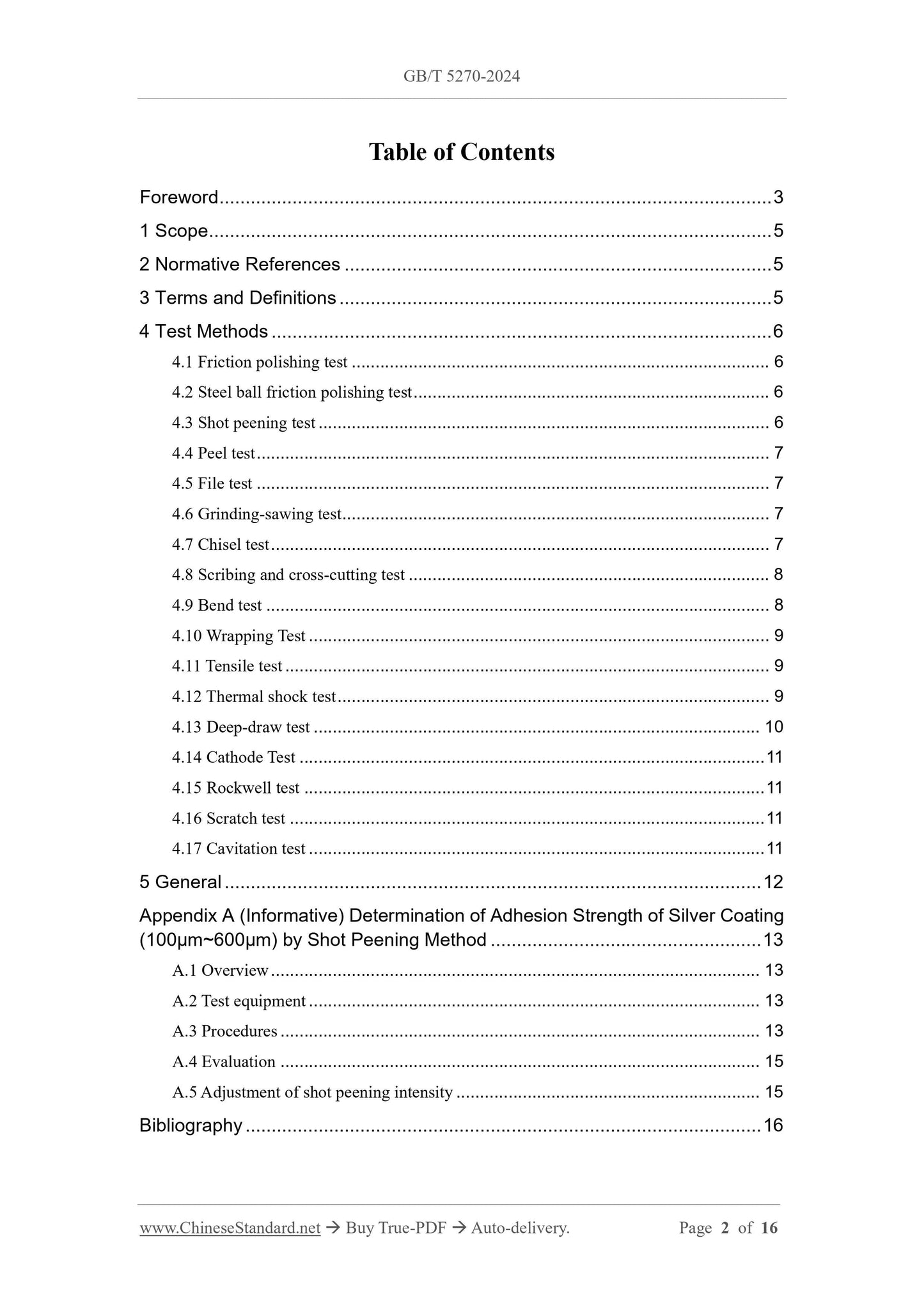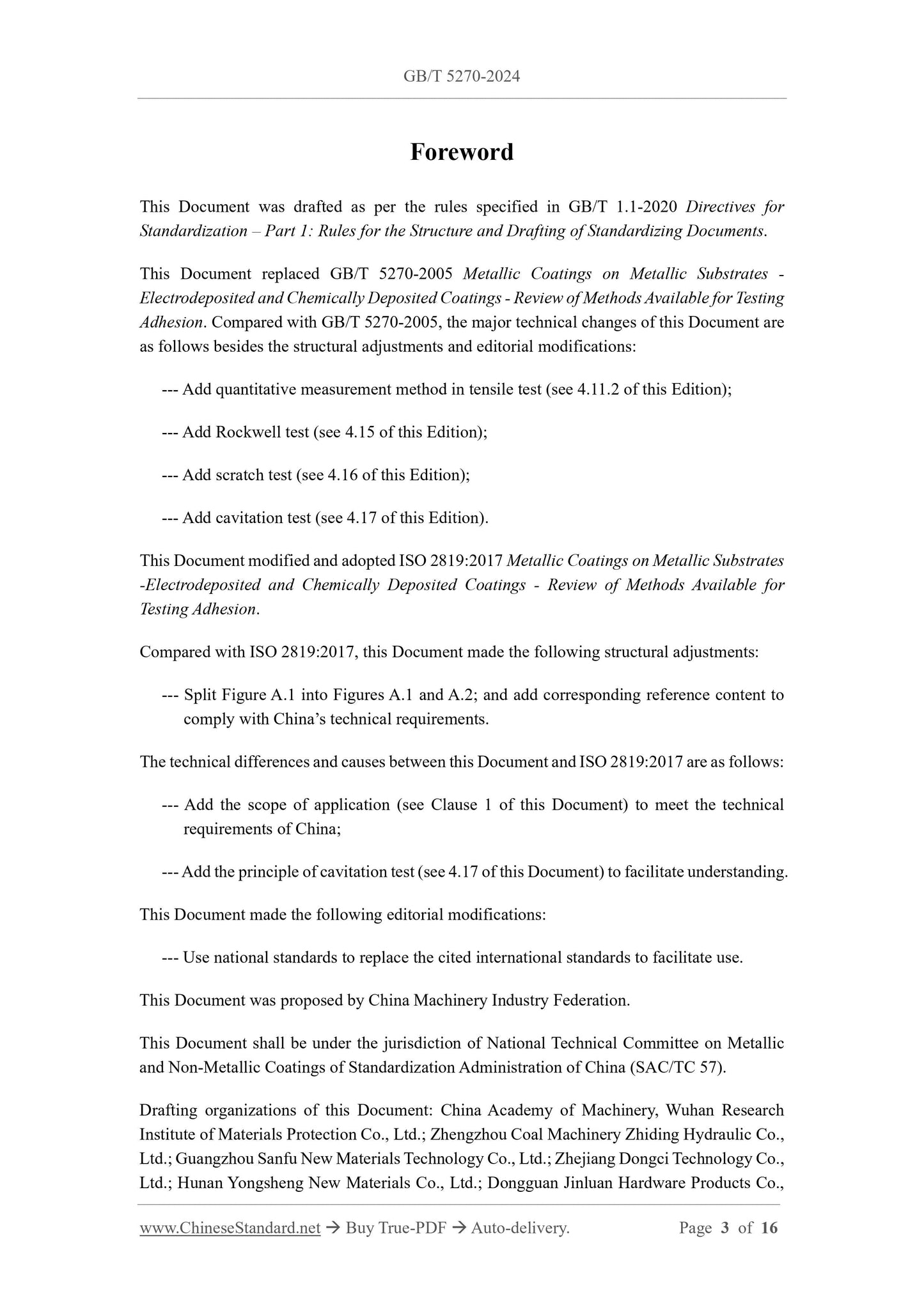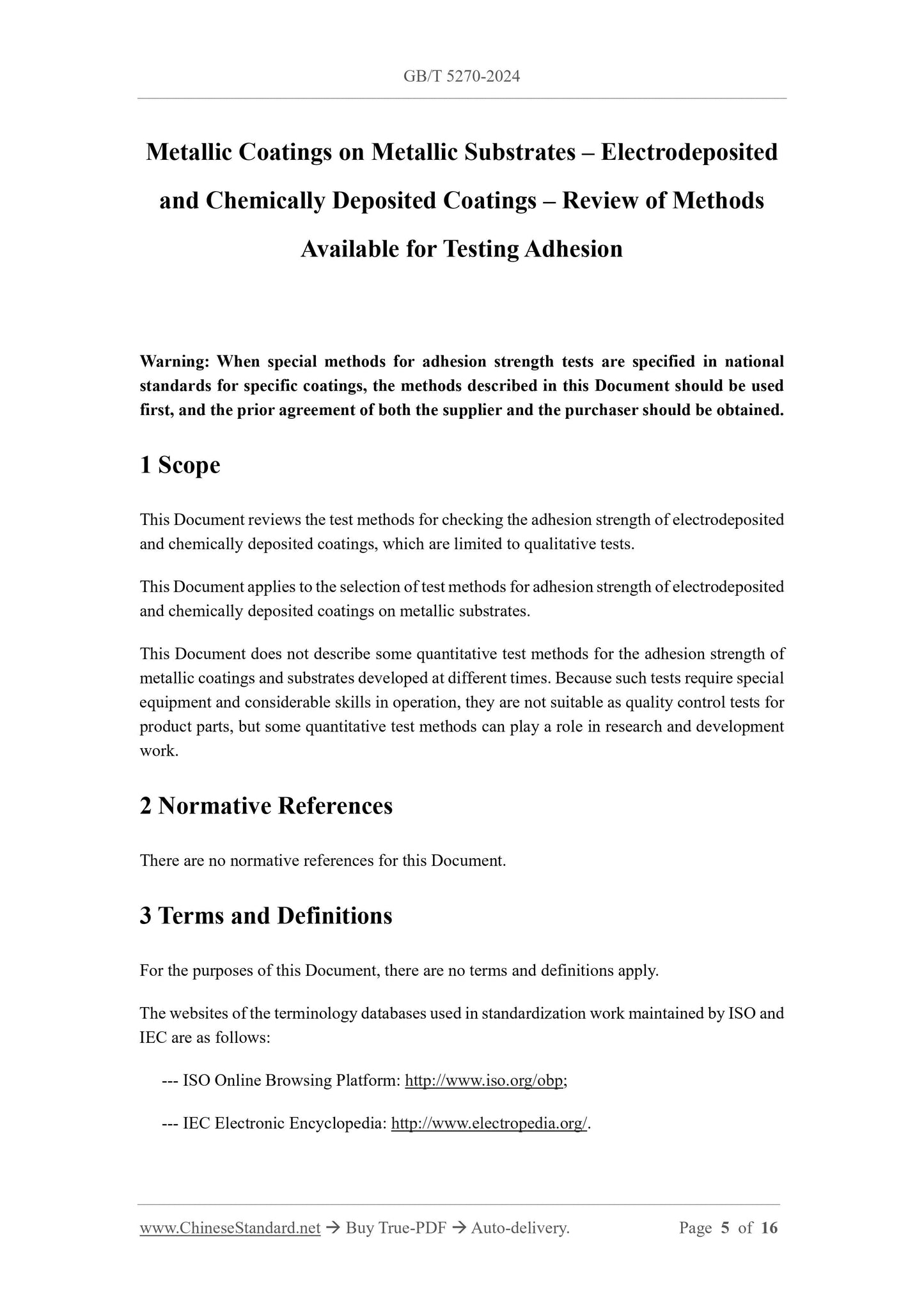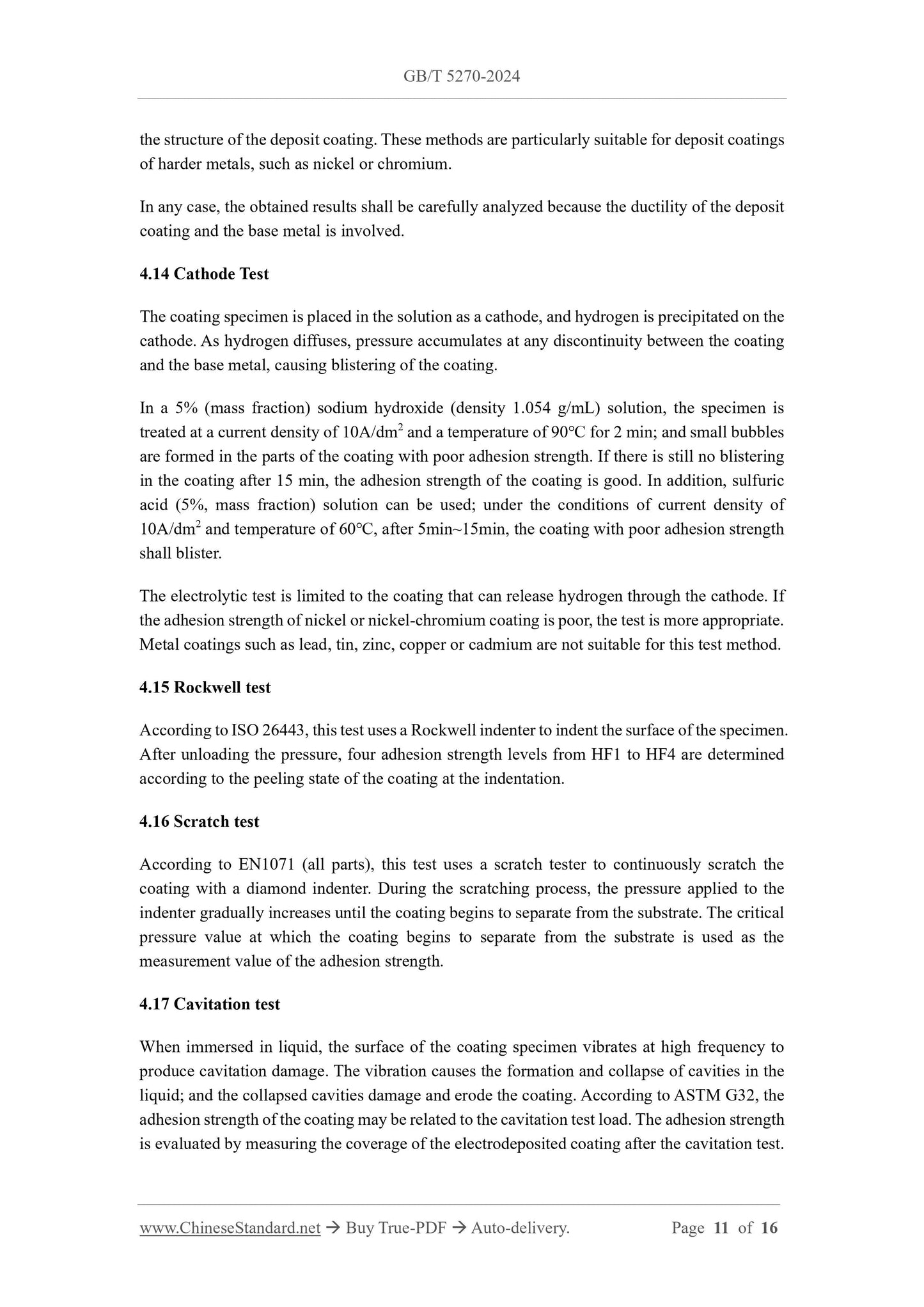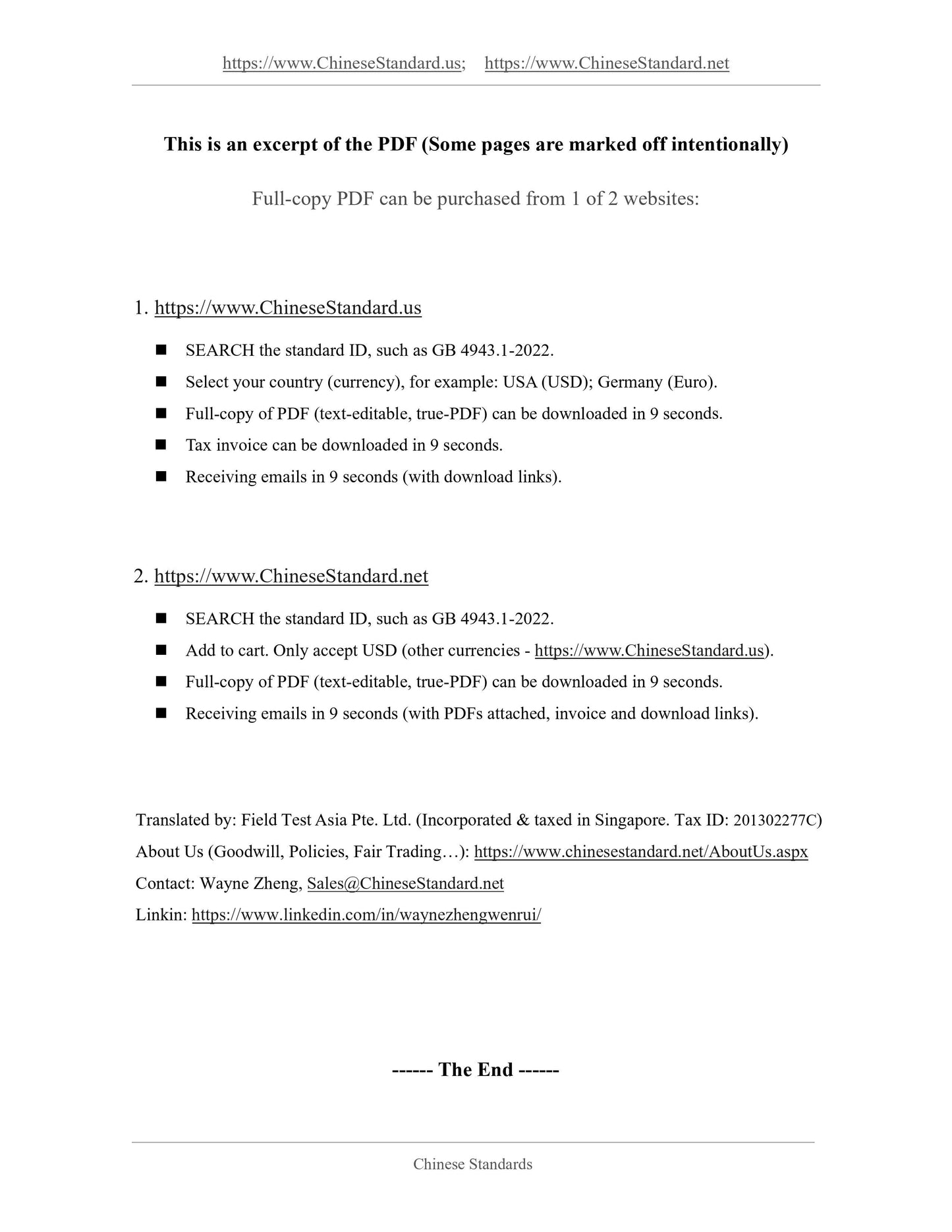1
/
of
6
www.ChineseStandard.us -- Field Test Asia Pte. Ltd.
GB/T 5270-2024 English PDF (GB/T5270-2024)
GB/T 5270-2024 English PDF (GB/T5270-2024)
Regular price
$320.00
Regular price
Sale price
$320.00
Unit price
/
per
Shipping calculated at checkout.
Couldn't load pickup availability
GB/T 5270-2024: Metallic coatings on metallic substrates - Electrodeposited and chemically deposited coatings - Review of methods available for testing adhesion
Delivery: 9 seconds. Download (and Email) true-PDF + Invoice.Get Quotation: Click GB/T 5270-2024 (Self-service in 1-minute)
Newer / historical versions: GB/T 5270-2024
Preview True-PDF
Scope
This Document reviews the test methods for checking the adhesion strength of electrodepositedand chemically deposited coatings, which are limited to qualitative tests.
This Document applies to the selection of test methods for adhesion strength of electrodeposited
and chemically deposited coatings on metallic substrates.
This Document does not describe some quantitative test methods for the adhesion strength of
metallic coatings and substrates developed at different times. Because such tests require special
equipment and considerable skills in operation, they are not suitable as quality control tests for
product parts, but some quantitative test methods can play a role in research and development
work.
Basic Data
| Standard ID | GB/T 5270-2024 (GB/T5270-2024) |
| Description (Translated English) | Metallic coatings on metallic substrates - Electrodeposited and chemically deposited coatings - Review of methods available for testing adhesion |
| Sector / Industry | National Standard (Recommended) |
| Classification of Chinese Standard | A29 |
| Classification of International Standard | 25.220.40 |
| Word Count Estimation | 18,194 |
| Date of Issue | 2024-06-29 |
| Date of Implementation | 2025-01-01 |
| Older Standard (superseded by this standard) | GB/T 5270-2005 |
| Issuing agency(ies) | State Administration for Market Regulation, China National Standardization Administration |
Share
